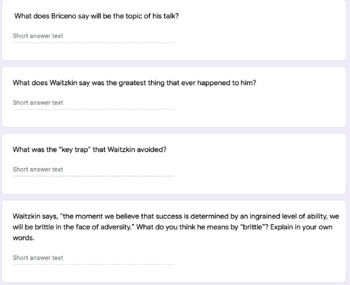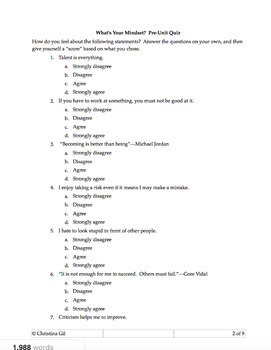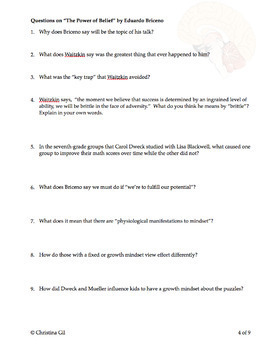Growth Mindset Activities High School: Growth vs Fixed Mindset Quiz & TED Talk
- PDF
- Google Apps™
- Internet Activities

What educators are saying
Description
Looking for some engaging no-prep activities to introduce your classes to growth mindset?
Teachers know how important it is to teach students about growth mindset, but it’s not enough to hang some posters or teach them some popular catch phrases about effort. This kind of well-intentioned instruction will only lead to students who feel bad about themselves and are a challenge to teach.
Growth mindset is more than just a belief in effort. Students need to understand the brain science behind the theory if they are going to realize how a fixed mindset is limiting their potential—as Carol Dweck herself explained in an article in Scientific America, they need “explicit instruction regarding the mind as a learning machine.” This mini unit is based on the research done by Dweck and her colleagues as well as on my sixteen years of experience in the classroom.
This unit is now optimized for teaching with Google Classroom.
When you introduce your students to the ideas behind growth mindset with this resource they will:
- get excited about the topic when they take a fun “quiz” on growth and fixed mindset
- watch a fascinating and informative TED Talk that explains how growth mindset works and how we can all work to adopt a growth mindset in our own lives
- read the actual article that Dweck and her colleagues used in their research to teach students about the brain science
- be on the path to growing their brains by taking on more challenges when they examine their own habits and beliefs
- understand the importance of failure in learning when they learn about the brain science and studies done on students
The entire mini unit is ready to go with minimal prep on you part. In fact, this would be a great choice for substitute plans.
“My students loved this!”—Cynthia L.
“A metacognitive assignment that will get kids talking and thinking.”—Buyer
“A great way to teach students about the brain science behind growth mindset. Wonderful resource!”—Buyer
“Perfect to start my second quarter, students need this type of motivation and the quiz, plus the video, plus the questions are just perfect and easy to follow. Thank you so much for this resource.”—Kathy C.





